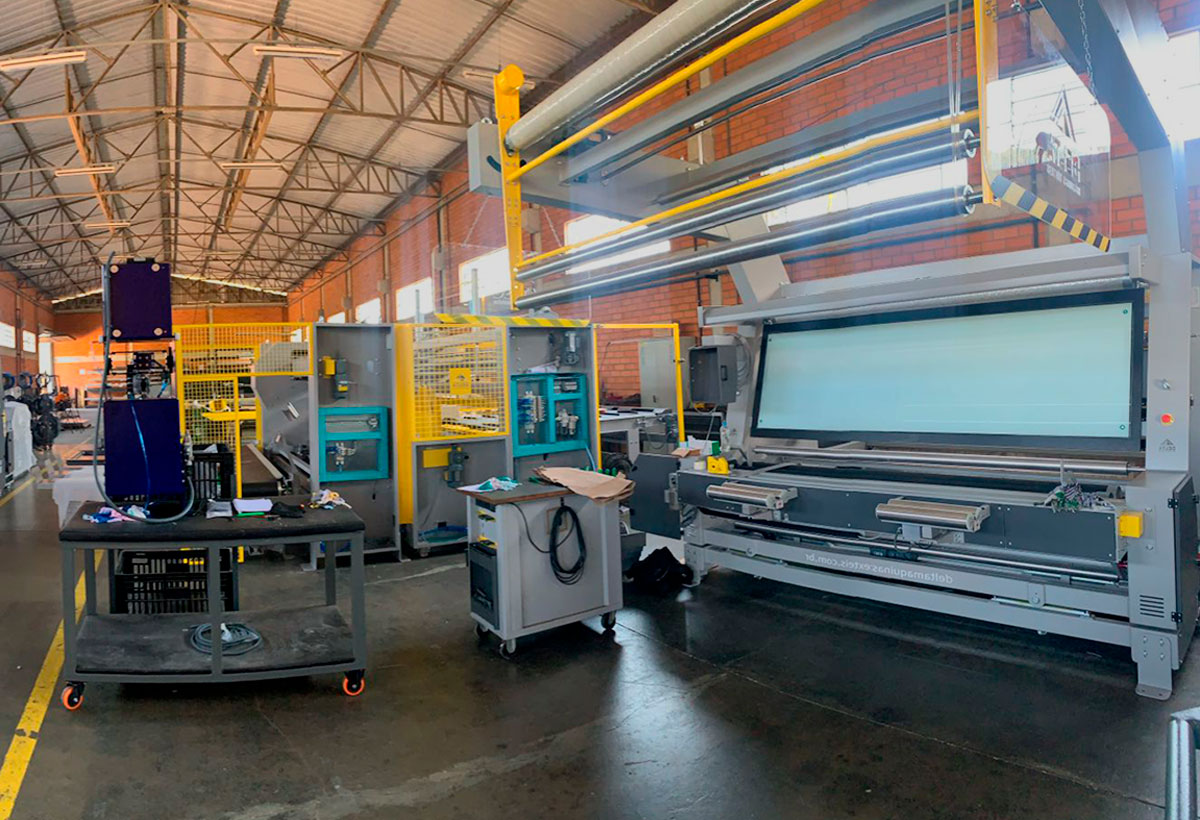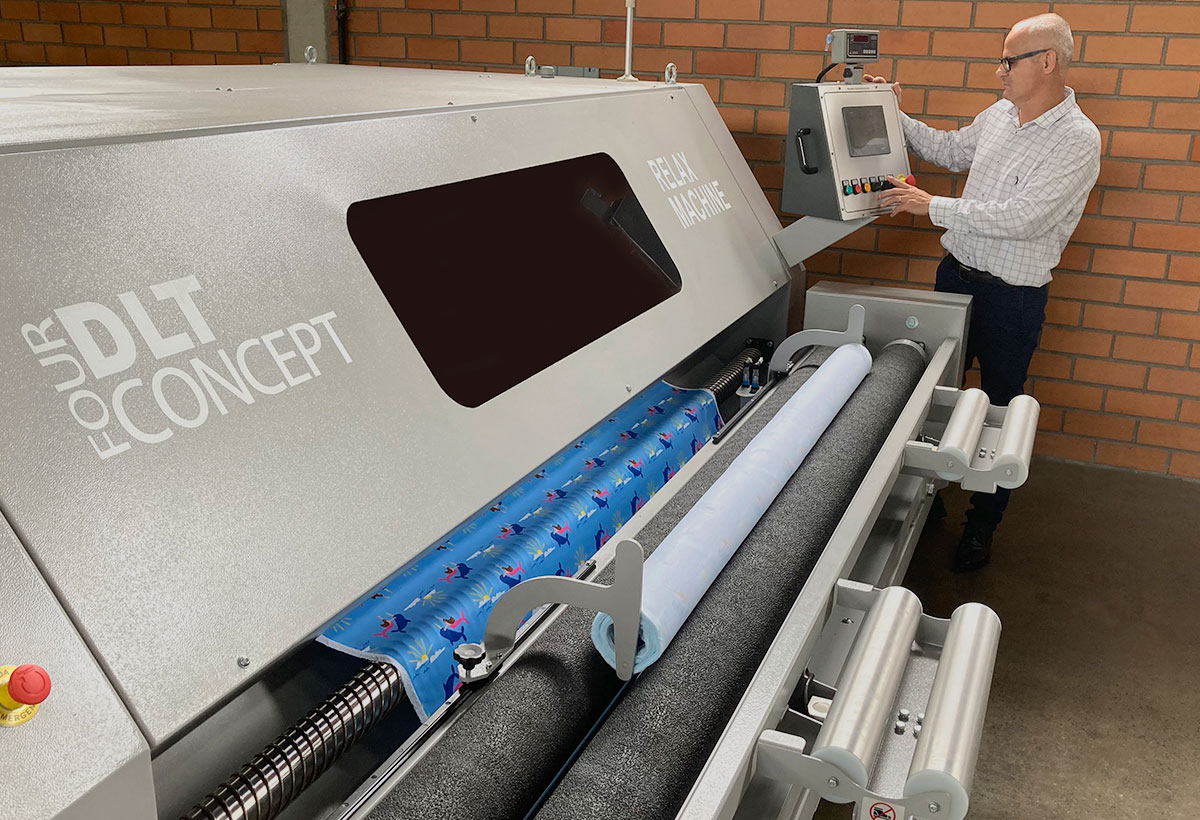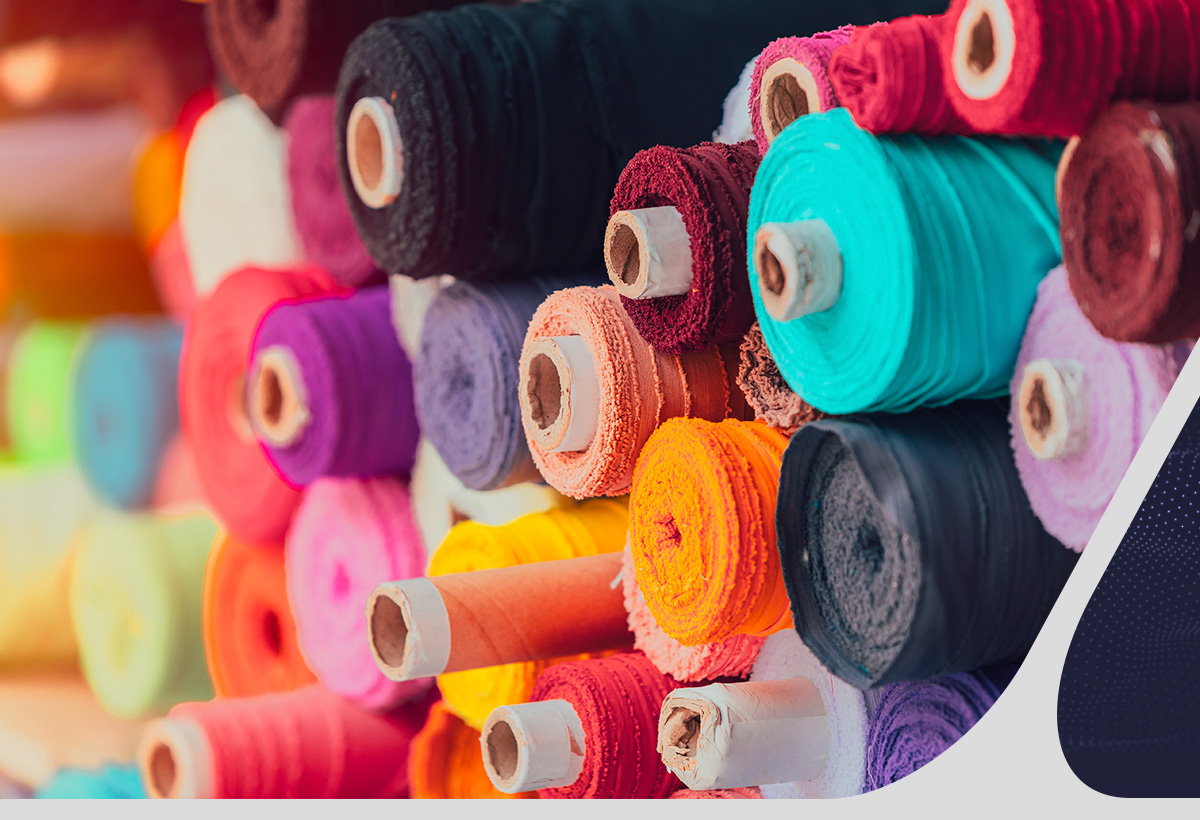The textile industry in Brazil generates income and creates jobs, being fundamental for the economy. Since its emergence, more than 2 centuries ago, it has been driven by the process of transformation and the use of new technologies.
In this content, discover how we became the 5th largest textile industry in the world and the 4th country in the clothing segment. From the production of raw materials to international fashion shows, we have a production structure that allows for increasingly exponential growth.
At the end of the article, we will bring the main expectations, trends and innovations in the textile industry. They must be part of the strategy of everyone seekingcompetitive advantages in this segment, such as cost reduction and resource optimization.
The history of the textile industry in Brazil
Some historians mention the beginning of the textile industry in Brazil in the colonial period, 500 years ago. However, at that time we had a movement inherited from European culture, with the Portuguese colonizers. So it was just influence.
From 1900 onwards, fashion was reformulated here, becoming more suited to the Brazilian climate. A fact that was driven by the First World War. In this century, the first national clothing manufacturers emerged and, thus, the Brazilian textile industry was born.
Later, with the industrial revolution and new technologies, the sector’s opportunities multiplied and never stopped growing. Every day, we have new trends in the market, based on optimizations in production and results.
The fact is that, currently, the textile industry is extremely relevant for the country’s economy, as well as for investments in innovation and technology. In addition to job creation! All this is proven with current data. So, see more in the next topic.
The textile industry in Brazil today

The textile industry in Brazil is more than 200 years old. Today, we are a global reference in beachwear, jeanswearandhomewear.
And we are gaining space in niches such as fitnessandlingerie. There’s more: the sector is the 2nd largest employer in the manufacturing industry.
This information is from the Brazilian Association of the Textile and Clothing Industry(Abit)). There is even other data, updated at the beginning of the year:
- Revenue: R$ 190 billion in 2021,
- Exports: US$ 1.14 billion in 2022,
- Imports: US$ 5.9 billion in 2022,
- Investments: R$ 4.9 billion in 2021,
- Production: 8.1 billion pieces in 2021,
- Volume: 2.16 million tons in 2021,
- Formal workers: 1.34 million,
- Indirect workers: 8 million and
- Companies: 22.5 thousand production units.
These numbers express a reality that places the sector as one of the most important for the national economy.
Result: we are the largest complete textile chain in the entire West. In other words, including:
- Fiber production;
- Cotton plantation;
- Wirings;
- Weaving;
- Processing companies;
- Clothing;
- Finishing;
- Retail;
- Fashion shows.
Regarding the job market, consultancy Grant Thornton revealed that, in Brazil, 38% of senior positions in companies in this industry are held by women. This puts us above the Latin American average in female representation.
Read also! OIT and SENAI: research on professional training in the textile sector
The largest regions of the textile industry in Brazil
In the 19th century, when Brazil began to transform into one of the main textile producers in the world, the Northeast region presented itself as a pioneer. After the 1960s, the Southeast and South regions became nationally prominent due to incentives and mergers.
Currently, these areas remain strong. For example, Americana (SP) has more than 600 companies in the sector and 200 of them are chemical fibers. Another industrial hub is in Vale do Itajaí (SC), with 8,000 businesses in the clothing sector.
As reported in themedia, Santa Catarina is the leader in the textile sector in Brazil. Brusque is the Brazilian capital of the textile industry and Gaspar is the capital of children’s fashion. Recently, the State surpassed São Paulo in terms of the transformation value of this industry: R$6.6 billion.
In the Northeast, we can highlight Agreste de Pernambuco, with a relevant production ofdenim jeans. In addition to Ceará, there are 20 municipalities directly linked to this type of production and with large investments in technological innovations.
The main sectors of the textile industry in Brazil
The Brazilian textile market operates in practically all industry sectors. However, some are better known. This is the case with the raw material: cotton and fibers. These inputs are used both in internal processes and taken to other countries.
Then, we also have synthetic fibers, which represent a sector that is gaining strength. The big bet is on the greater added value of the products.
Therefore, textile products are yet another topic: yarns, fabrics and knits, with great expression in the domestic market.
Retail closes the list of sectors that place Brazil in the global spotlight. The final products make our country a reference in diversity and quality.
Speaking of final products, listening to the market is important to adapt to demands and guarantee excellent production.
Expectations of the textile industry in Brazil

Our country has an incredible history in the textile sector and the data proves this. In this last topic, understand what we can expect from the textile industry in Brazil. Are there good expectations? More than that, how to differentiate yourself in the market?
For every company that seeks good results, keeping up with technologies makes sense. Furthermore, using knowledge to apply techniques allows for faster, safer and, consequently, more profitable operations as well.
Expectations, therefore, involve digital transformation. See some trends:
Research
One of the expectations is continued investment in R&D (Research and Development). According to USP (University of São Paulo): “[…] They are fundamental in the modernization process that characterizes the textile sector worldwide”.
Machines
The use of technologies in machines is another initiative in the digital transformation of a textile company. Automating tasks allows for cost reduction, increased demands and better deliveries. Start by defining investments in textile machinery.
Nanotechnology
Nanotechnology brings more functionality and efficiency to your production processes. This goes beyond the aesthetic field in clothing manufacturing. Start thinking about which products improve users’ lives.
Internet of Things (IoT)
IoT is the connection of objects and equipment with the internet. The result is: speed, flexibility and versatility in manufacturing pieces. And it’s not just about creating smart clothes and smart factories, but have moreefficient management!
Digital printing
It is a technique that aims to improve deliveries to customers, from reducing paint costs to speeding up the stage. The manual format still exists, but have been replaced by the more modern one, which also brings the advantage of mass customization.
Sustainability
Another key factor is sustainability: reduction of waste, water and expenses. In addition to the use of renewable energy. Currently, Brazil already has carbon-free products in this industry.
Slow fashion
Continuing the previous topic, it is worth paying attention to the term slow fashion. That is, slowed-down fashion, different from fast fashion. It indicates a movement of consumers who value more conscious and sustainable clothing production, with focus on quality.
Feedstock
Combining sustainability and waste reduction, the use of innovative raw materials is another investment for the coming years. Therefore, functional and biodegradable fabrics should also be on the agenda in your company.
Read also: Panorama of the textile industry in Latin America
Innovate! And don’t be left behind in the textile industry in Brazil
Undeniably, the textile industry in Brazil impacts the country and the world. From the economy to new investments in technology. So, if you are part of it, you have a great chance of becoming a pioneer and a reference in the market. To achieve this, innovation is the first step.
For those who don’t know how or where to start, the good news is that we have a free e-book. Access and download right now to discover how to ensure innovation in your company through technology:


